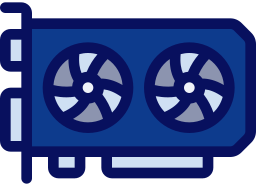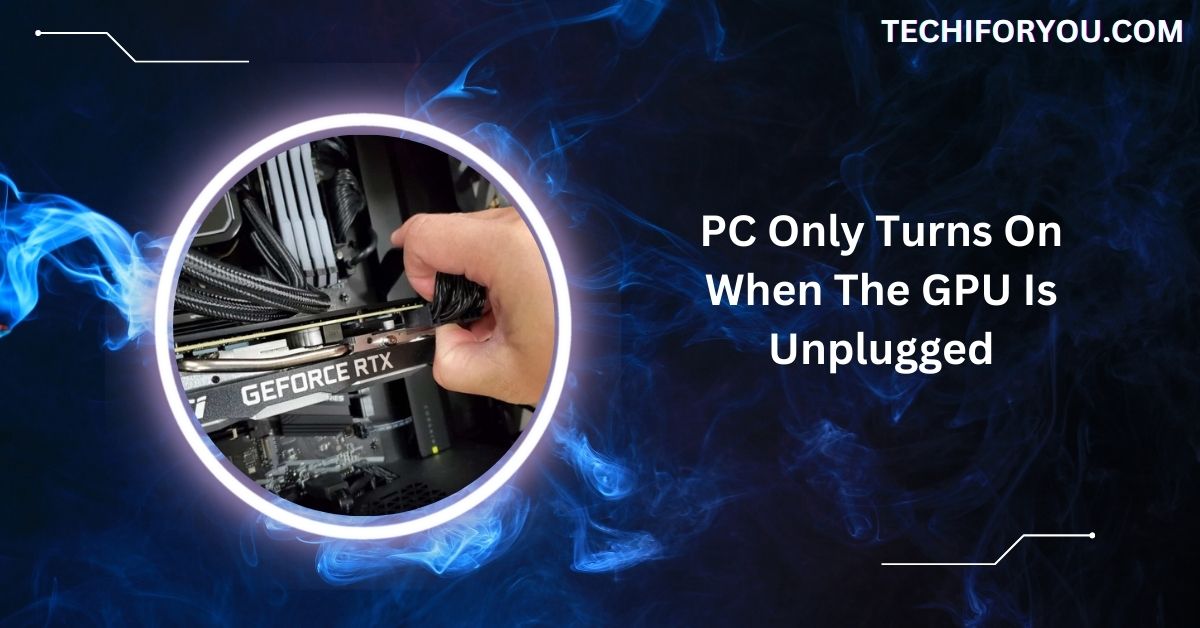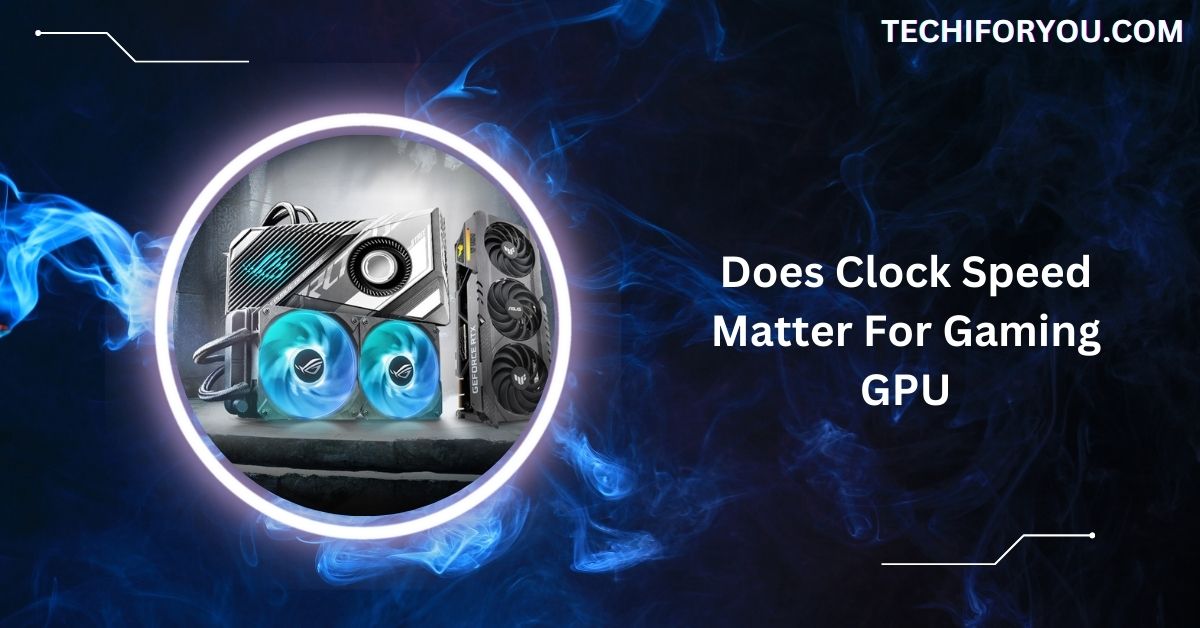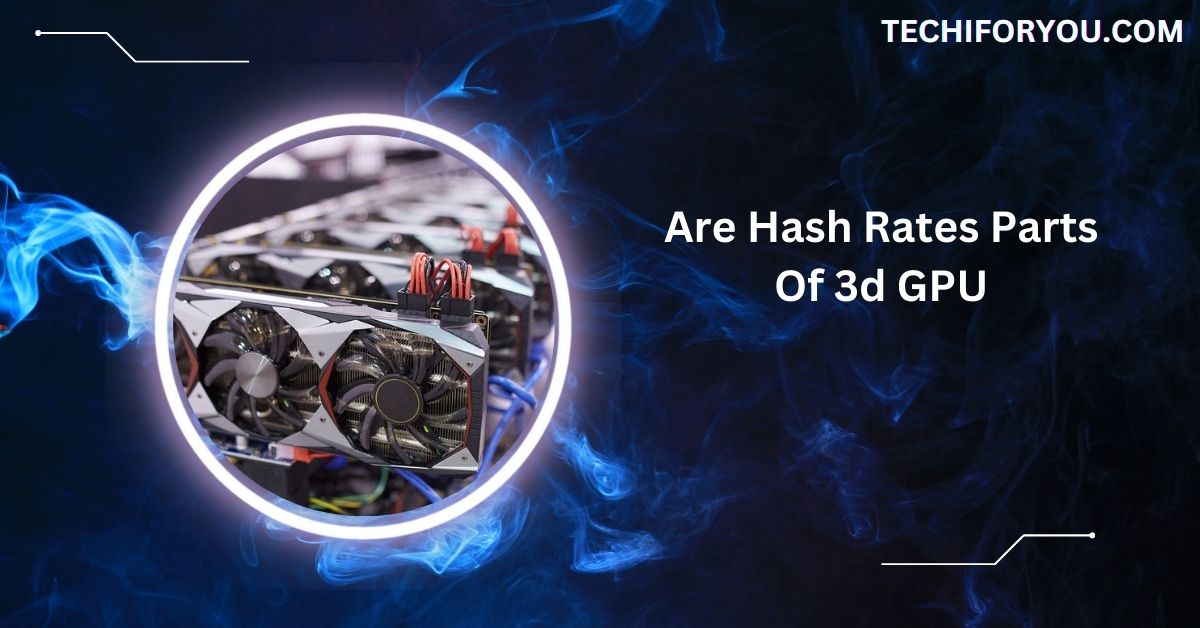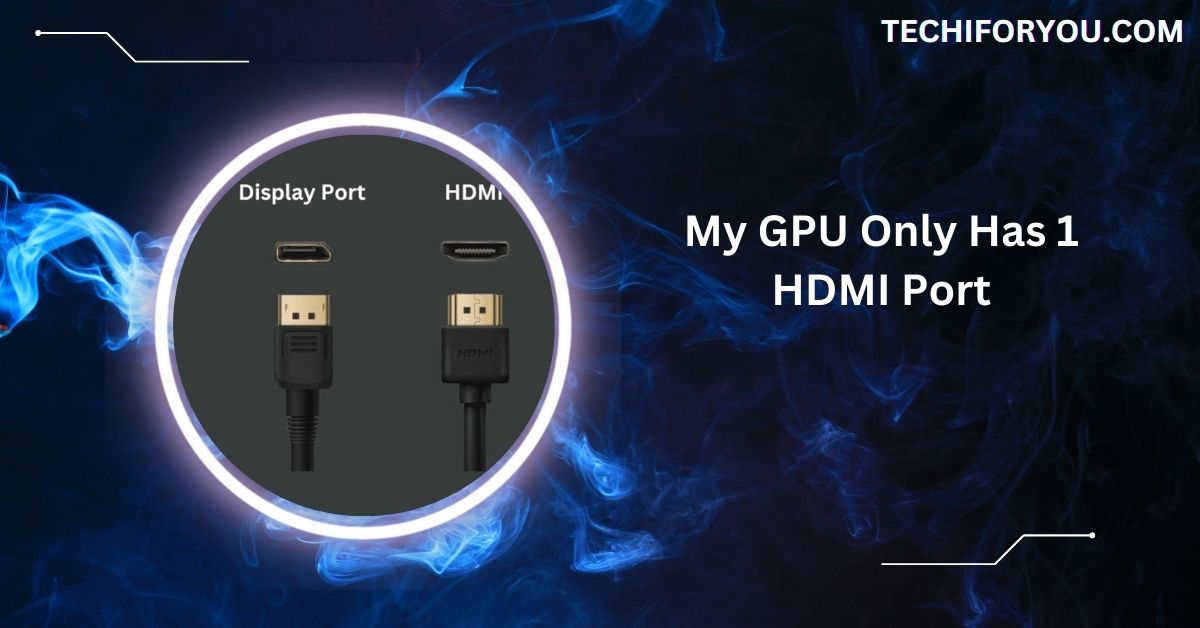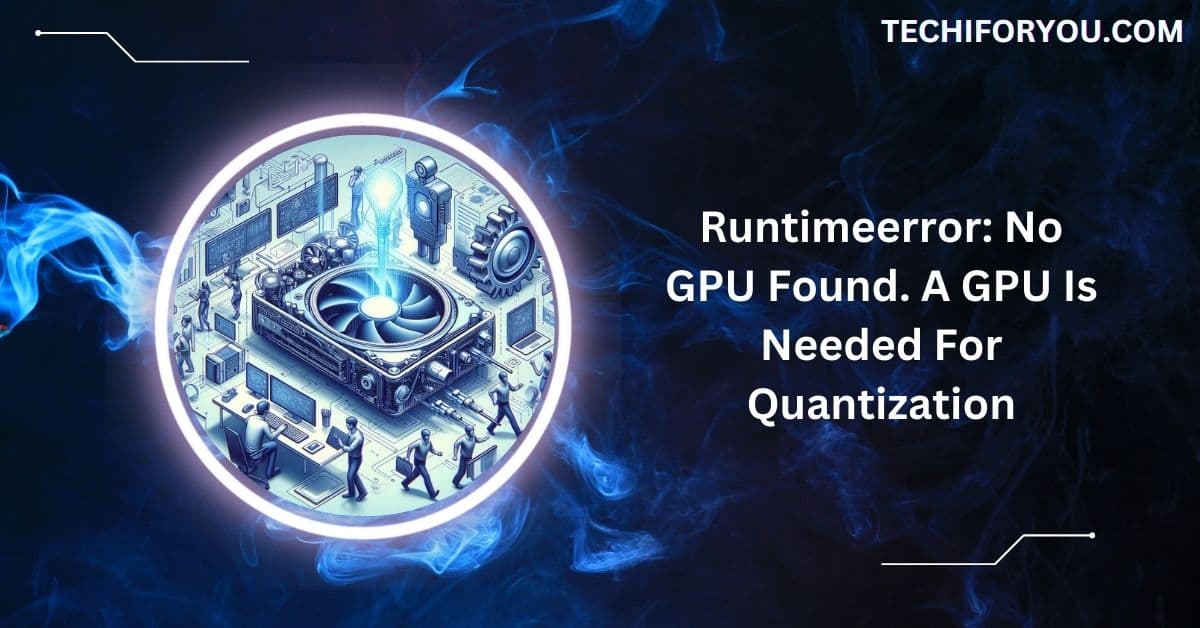If your PC only turns on when the GPU is unplugged, it can be a frustrating experience. This may seem puzzling, but it often points to a deeper problem with the GPU, power supply, or motherboard.
If your PC only turns on when the GPU is unplugged, ensure the card is fully inserted and check for power issues or a possible shortage. Reset BIOS and test with another GPU or PSU if necessary.
Let’s Explore Some Common Reasons Behind This Issue.
Understanding the Issue
When your PC only turns on with the GPU unplugged, it often means something is wrong with the GPU or its connection.
The GPU might be damaged, or the power supply might not provide enough energy for both the GPU and the system.
Sometimes, it could also be due to driver or BIOS issues. Identifying the root cause is important by checking all connections, power sources, and system settings before replacing any components.
Potential Causes
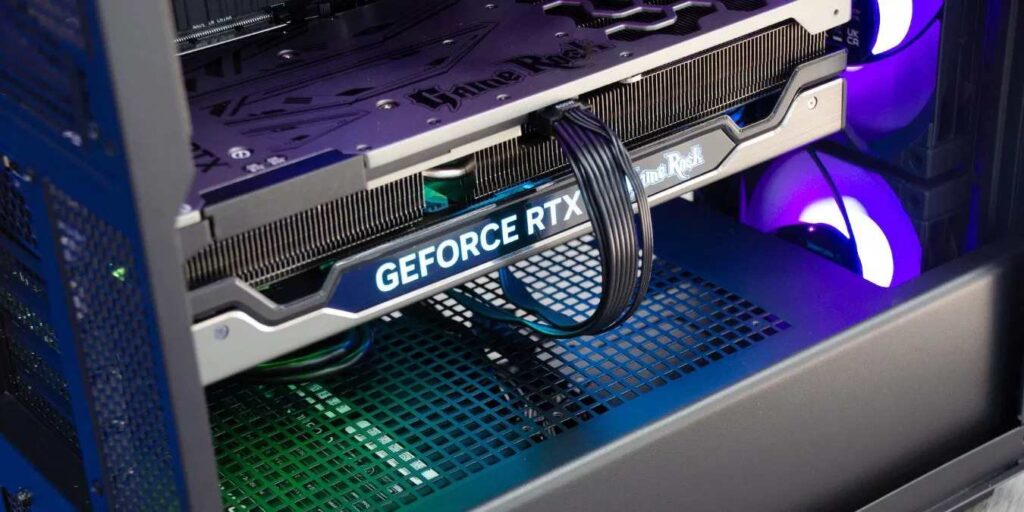
1. Faulty GPU
If the GPU is malfunctioning, it might cause the system to fail during startup. This can happen due to damaged components or overheating. A faulty GPU may prevent the system from booting or cause display issues, making testing or replacing the card necessary.
2. Power Supply Problems
A weak or failing power supply unit (PSU) may not provide enough power to the GPU, leading to startup issues. If the PSU cannot support the GPU’s power demand, it can cause the system to remain off or crash during boot.
3. Driver Conflicts
Outdated or incompatible GPU drivers can create conflicts with other system software. This can cause the PC to fail to recognize the GPU, leading to boot failures. Reinstalling or updating the GPU drivers can often fix the issue.
4. BIOS Misconfigurations
Incorrect BIOS settings can interfere with the system’s ability to boot correctly when a GPU is installed. Sometimes, the BIOS might not recognize the GPU or be set to use integrated graphics. Resetting or updating the BIOS can resolve this problem.
5. Hardware Issues
Loose or damaged connections between the GPU, motherboard, and PSU can prevent the system from powering. Incompatibility between the GPU and motherboard, or faulty PCIe slots, can also cause this issue. Double-checking all hardware connections can help isolate the problem.
Step-by-Step Troubleshooting
1. Inspect Hardware Connections
Power down your PC and unplug it. Open the case and remove the GPU. Re-seat the GPU into its PCIe slot, ensuring all connectors are securely connected. Check that power cables are properly plugged into the GPU and motherboard.
2. Test the Power Supply
Verify that the power supply unit (PSU) is functioning correctly and supplying adequate power. TestTest the system with a known working PSU to rule out any power-related issues.
3. Update or Reinstall GPU Drivers
Boot your system without the GPU installed. Uninstall any existing GPU drivers from the operating system. Then, download and install the latest drivers from the GPU manufacturer’s official website to avoid driver conflicts.
4. Reset BIOS Settings
Access the BIOS during startup and reset it to default or optimized settings. This can help resolve any issues with GPU recognition or settings that might prevent the system from booting.
5. Test GPU in a Different PCIe Slot
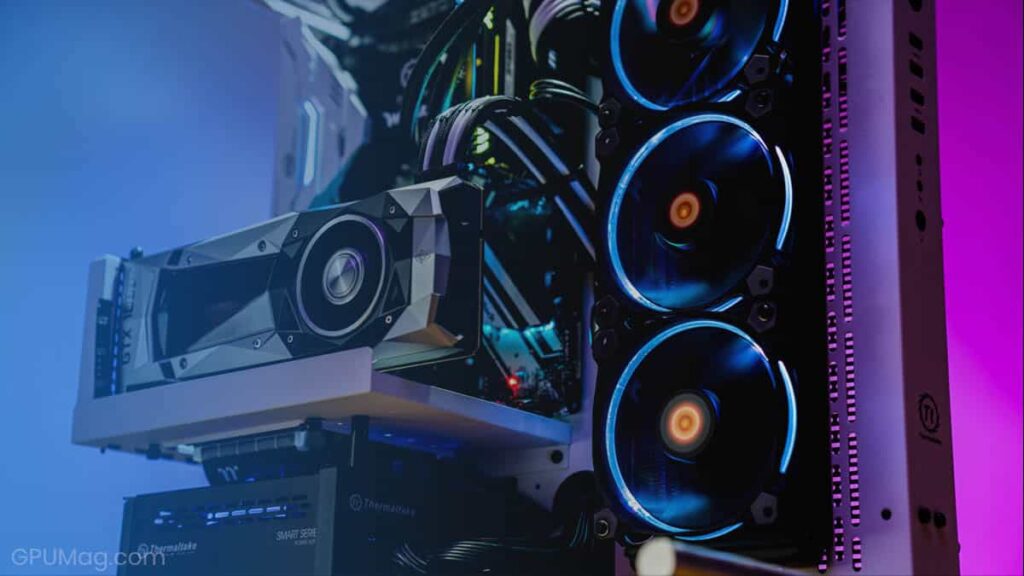
If the system still doesn’t boot, try moving the GPU to a different PCIe slot on the motherboard. Sometimes, a faulty PCIe slot can cause startup issues.
6. Verify Compatibility of Components
Double-check that the GPU is compatible with your motherboard and that all components meet the system’s power requirements. Incompatibility can sometimes prevent the system from booting when the GPU is installed.
7. Re-seat Other Components
Sometimes, the issue might not be with the GPU. Ensure that other components like RAM and storage devices are properly seated in their respective slots. Loose connections can also prevent the system from starting up.
8. Consult a Professional Technician
If none of the above steps resolve the issue, consider consulting a professional technician. They can provide in-depth diagnostics and identify the problem more quickly.
Additional Considerations
1. Test with Integrated Graphics: If your motherboard has integrated graphics, try using them instead of the GPU to ensure the system functions properly.
2. Check for Firmware Updates: Ensure your motherboard’s firmware (BIOS) is current, as updates can fix compatibility issues with newer GPUs.
3. Consider Power Draw Requirements: Ensure your PSU provides enough power for the GPU and other system components. High-performance GPUs often need higher-wattage PSUs.
4. Verify GPU Warranty: If the GPU is under warranty, consider contacting the manufacturer for a replacement if you suspect hardware failure.
5. Check for External Interference: Ensure no external devices are connected to the PC that might cause startup issues (e.g., external hard drives, USB devices).
6. Inspect for Physical Damage: Look for visible signs of physical damage, such as bent pins or burn marks on the GPU, motherboard, or PSU.
Signs Your GPU Might Be Faulty
- Screen Artifacts: If you see strange lines, colors, or glitches on your screen, it could be a sign of a failing GPU. These visual errors often occur during gameplay or when running graphics-intensive applications.
- Crashes and Freezes: If your computer crashes, freezes, or experiences blue screens of death (BSOD) when using the GPU, it might indicate a hardware failure.
- Poor Performance: A sudden drop in frame rates or slower-than-usual performance in games and applications could suggest that the GPU struggles to operate fully.
- No Display Output: If the screen remains blank or shows no signal when the GPU is connected, it may be a sign that the GPU is not functioning properly.
- Overheating: Excessive heat can cause a GPU to fail. If your GPU temperature spikes often and causes crashes or throttling, it could be a sign that the GPU is damaged or has poor thermal management.
- Unusual Noise: If you hear strange noises like clicking or grinding from the GPU fan, it could indicate that the fan is damaged or the GPU is having trouble cooling itself.
Checking for Power Supply Unit (PSU) Issues
If the PSU isn’t working properly, your PC may fail during startup. Check that the PSU provides enough power for the GPU and other components. You can test the PSU using a multimeter or swap it with a known working one to rule out issues.
PC Turns Off when I Plug in GPU
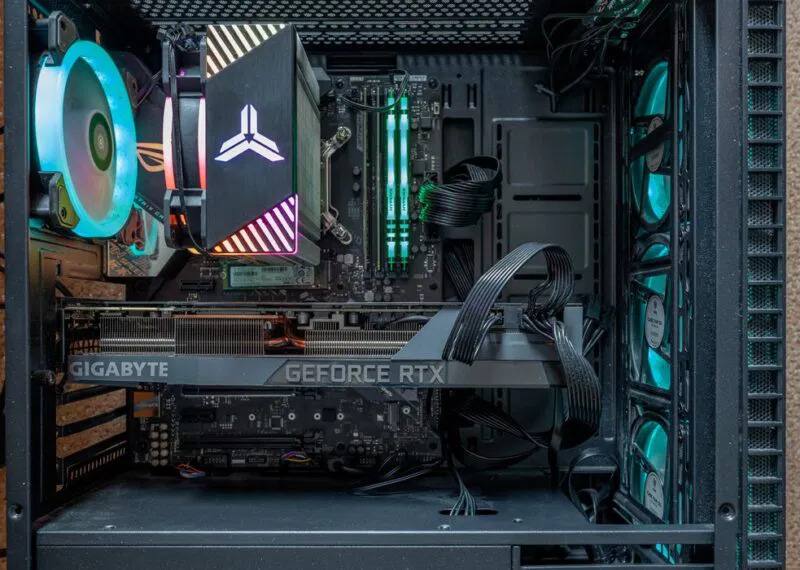
If your PC turns off when you plug in the GPU, it might be due to power issues. The power supply may not be strong enough to handle the GPU’s demands. Check the PSU wattage and connections, and try reseating the GPU to ensure proper contact.
GPU Won’t Power On
If your GPU doesn’t power on, it could be due to a faulty power connection or PSU. Check if the power cables are securely connected to the GPU and PSU. Also, ensure the PSU delivers enough power and test the GPU in another system if needed.
GPU Won’t Post
If your GPU doesn’t post, it may not be properly seated or faulty. First, check if the GPU is correctly inserted into the PCIe slot and that all power connectors are secure. Test the system without the GPU to see if the motherboard functions correctly.
PC Only Turns On When The GPU Is Unplugged Windows
If your PC only powers up with the GPU unplugged, it could indicate a problem with the GPU or PSU. It might be that the PSU isn’t supplying enough power or the GPU is faulty. Try testing with another GPU or PSU to isolate the issue.
Gaming PC Only Turns On When the GPU is unplugged
A gaming PC that only turns on with the GPU unplugged may have power issues or a faulty GPU. Ensure that the PSU provides enough power for the GPU and other components. Try reseating the GPU or testing the system with a different GPU to identify the problem.
FAQs
1. Why is my computer not turning on when I have a graphics card?
If your computer won’t turn on with the GPU, it could be a power issue or a faulty GPU. Check PSU power, connections, and the GPU itself.
2. How do I know if my GPU is fried?
Signs of a fried GPU include display issues, crashes, or no output. Test the GPU in another system to confirm if it’s the problem.
3. Can a graphics card cause a PC not to boot?
Yes, a faulty or improperly seated GPU can prevent your PC from booting. Try reseating the GPU or testing with another card to troubleshoot.
4. Will the PC turn on without GPU?
Yes, the PC can turn on without a GPU, but integrated graphics can be used. Without a GPU, there will be no display output.
5. How to diagnose PC not turning on?
Check for power supply issues, loose connections, and faulty components. Try disconnecting the GPU and testing with a known working PSU to diagnose the issue.
6. Can graphics card cause computer shut down?
Yes, a faulty GPU can cause your PC to shut down unexpectedly, especially if it’s overheating or drawing too much power. Try testing the GPU in another system.
7. Can a motherboard cause a black screen?
Yes, a motherboard can cause a black screen due to faulty connections, damaged ports, or BIOS issues. Check the motherboard, cables, and power connections.
8. Why won’t my monitor turn on when I plug in my graphics card?
If your monitor won’t turn on with the GPU, check the display cable connection and GPU power and ensure the GPU is properly seated in the PCIe slot.
9. Why won’t my computer display when I turn it on?
If there’s no display, check the GPU connection, monitor input, and ensure the GPU is properly installed. Test with integrated graphics if available.
10. Why is my GPU not getting power from the PSU?
Check the power cables and connections to see if the GPU isn’t getting power. Ensure the PSU provides enough wattage and the connectors are securely plugged into the GPU.
Conclusion
In conclusion, if your PC only turns on when the GPU is unplugged, it often points to issues with the GPU, PSU, or connections. By following step-by-step troubleshooting, checking the power supply, updating BIOS, and testing components, you can identify and resolve the problem, restoring your system’s functionality.
